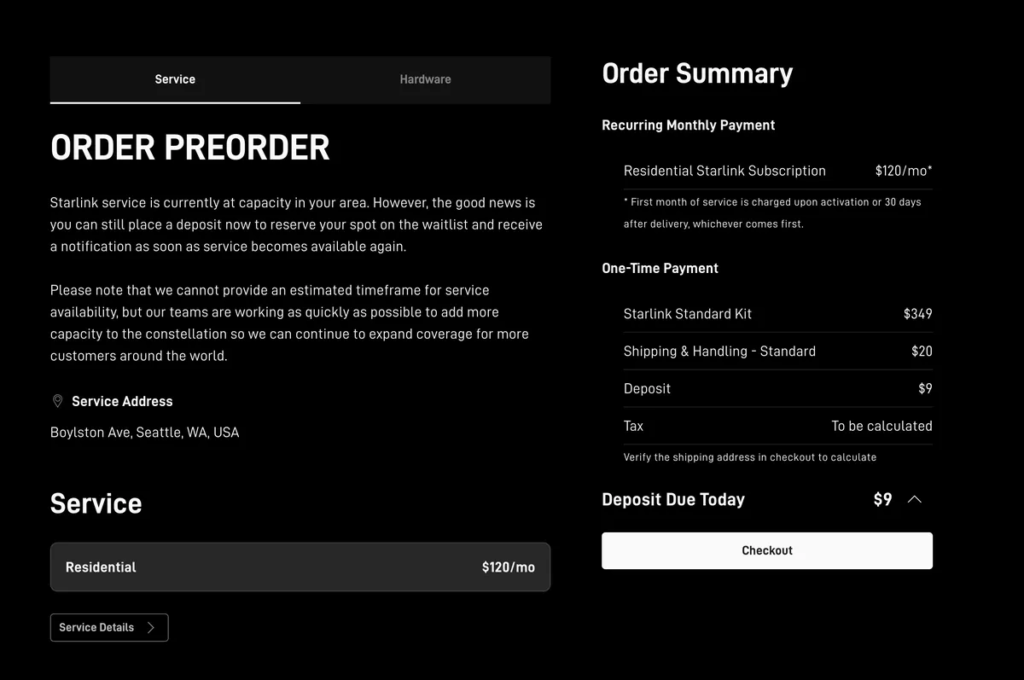SpaceX’s Starlink satellite internet service has achieved a significant milestone, reaching availability in over 100 countries worldwide. According to Starlink’s official availability map, the service is now accessible across much of the United States, Europe, South America, Africa, and Southeast Asia. For regions where the service is live, SpaceX claims that hardware can be shipped “immediately,” enabling users to connect to high-speed internet with minimal delay.
This expansion marks a major step forward in SpaceX’s mission to provide reliable, high-speed internet to underserved and remote areas. However, the journey to global connectivity is far from over. Many countries and regions still await regulatory approvals and capacity upgrades, with availability projected to arrive by 2025. In some densely populated U.S. cities, such as Seattle, Portland, San Diego, and Austin, demand has already outpaced supply, leaving these areas marked as “sold out” on the Starlink map.
What Makes Starlink Unique?

Since its launch in fall 2020, Starlink has positioned itself as a game-changer in the satellite internet industry. Unlike traditional satellite providers that rely on geostationary satellites orbiting at altitudes of around 35,000 kilometers, Starlink utilizes a constellation of over 7,000 low Earth orbit (LEO) satellites. These satellites operate at altitudes between 340 and 1,200 kilometers, significantly reducing latency and improving connection speeds.
Key advantages of Starlink include:
- High-Speed Internet: Starlink promises download speeds ranging from 50 to 200 Mbps, with some users reporting even higher speeds.
- Low Latency: With LEO satellites, latency is typically between 20 to 40 milliseconds, making it suitable for real-time applications like video calls and online gaming.
- Global Coverage: Starlink’s expanding network aims to bridge the digital divide by providing internet access to rural and remote areas where traditional infrastructure is lacking.
Challenges and Limitations
While Starlink’s rapid expansion is impressive, the service faces several challenges:
- Regulatory Hurdles: Gaining approval from local governments and regulatory bodies is a complex and time-consuming process, delaying availability in some regions.
- Capacity Constraints: High demand in urban areas has led to capacity issues, resulting in “sold out” statuses in cities like Seattle and Austin.
- Cost: The upfront cost of Starlink hardware (around 599)andmonthlysubscriptionfees(startingat599)andmonthlysubscriptionfees(startingat120) may be prohibitive for some users, particularly in developing countries.
The Road Ahead for Starlink
SpaceX’s ambitious plans for Starlink don’t stop at 100 countries. The company continues to launch satellites regularly, with the goal of expanding its constellation to tens of thousands of units. This expansion will not only improve coverage but also enhance network capacity, reducing congestion and improving performance for users worldwide.
In addition to residential internet services, Starlink is exploring other applications, including:
- Maritime and Aviation Connectivity: Providing high-speed internet for ships, planes, and other mobile platforms.
- Emergency Response: Offering reliable communication during natural disasters and emergencies when traditional networks are down.
- Rural Development: Empowering remote communities with access to education, healthcare, and economic opportunities through reliable internet.
How Starlink is Changing the Internet Landscape
Starlink’s success has sparked a wave of innovation in the satellite internet industry. Competitors like Amazon’s Project Kuiper and OneWeb are also investing in LEO satellite constellations, aiming to provide similar services. This competition is driving advancements in technology and reducing costs, ultimately benefiting consumers.
For users in underserved areas, Starlink represents more than just internet access—it’s a lifeline. From enabling remote work and online education to supporting small businesses and connecting families, the impact of reliable internet cannot be overstated.
How to Get Starlink
If you’re interested in joining the Starlink network, here’s how to get started:
- Check Availability: Visit the Starlink availability map to see if the service is available in your area.
- Order Hardware: If your location is eligible, you can order the Starlink kit, which includes a satellite dish, router, and cables.
- Set Up Your System: Once your hardware arrives, follow the simple setup instructions to connect to the Starlink network.
A New Era of Global Connectivity
SpaceX’s Starlink is revolutionizing the way we think about internet access. By leveraging cutting-edge satellite technology, the service is bringing high-speed, low-latency internet to over 100 countries and counting. While challenges remain, the potential for Starlink to bridge the digital divide and empower communities worldwide is undeniable.
As SpaceX continues to expand its network and improve its services, the dream of global connectivity is becoming a reality. Whether you’re in a bustling city or a remote village, Starlink is paving the way for a more connected future.









